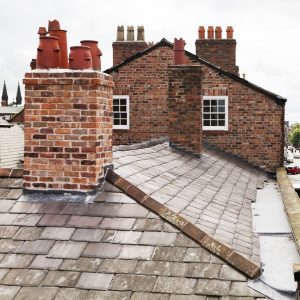
During a recent chimney inspection that I was attending for one of my buyer clients, the chimney inspection company opened the flue and out fell an old bird’s nest. The technician became a little concerned that there may be an “active chimney swift” nest. Meaning there were eggs in the nest. I listened to him and his partner talk about what to do next and if they were going to be able to continue the inspection. The first thing was to determine if there was an active nest for this “chimney swift.” In 27 years of real estate, I had not heard of this, let alone had an issue with it. I had been to chimney inspections before, but never had this come up.
I quickly started googling, as I love to do when a new subject comes my way. Well, I was quite surprised to find out about these little birdies and what they are. For those of you that do not know, chimney swifts are migratory birds that return to Maryland in early April. Historically, they nested in hollow trees. As American pioneers moved westward and cleared forests, they removed the swifts’ natural habitat. They were known as the “American Swifts.” As masonry chimneys were being erected by these same pioneers, it became the perfect alternative for these American Swifts to nest in.
They have specially designed feet that enable them to cling to vertical surfaces. They build their nests from twigs and “glue” it to the side of the wall with their sticky saliva. Nest building takes place from 18 to 30 days, but egg laying may begin before the nest is complete. Incubation lasts from 19 to 21 days. Apparently, after the babies have hatched, they remain in the nest up to 30 days. They make loud, high pitched chirping noises. For anyone who has experienced this, I am sure it must be annoying at times.
Back to the inspection. These chimney swifts are protected under The Migratory Bird Treaty Act. They cannot be touched or removed. Heavy fines, and even imprisonment can occur. (No wonder the technicians were concerned. I was impressed they knew all about this and were not going to disrupt this “active nest.”) The technician made his way to the roof and with where the nest was located, he was able to do a good job, and give us a complete inspection and report.
The dilemma now is that nothing can be done until the baby swifts take their flight and leave the nest for good. Come the fall, it was recommended that another cleaning be made to clear out the nest and any other messes these intriguing birds have made. This fireplace did not have a cap on it, so that will be one of the first things to be done as well once the babies and their parents have flown the coup.
If you have a masonry fireplace, it is important to have it cleaned and inspected regularly. And if you don’t have a cap on it, that is highly recommended to have installed to prevent this from happening.
~Sharon
